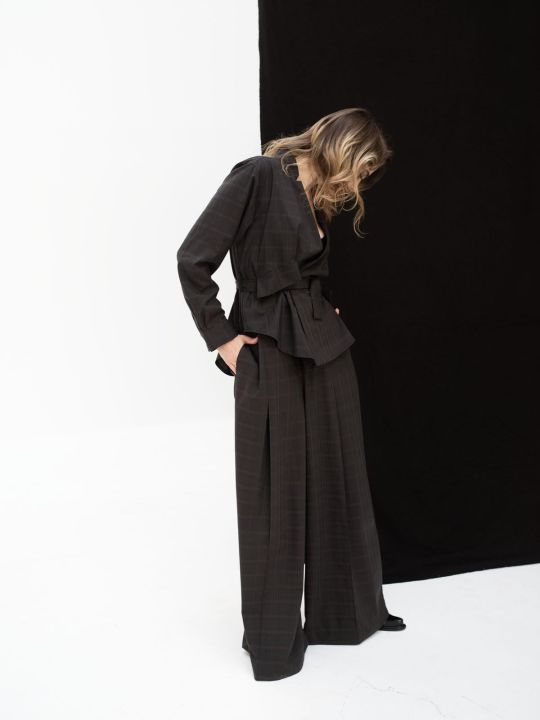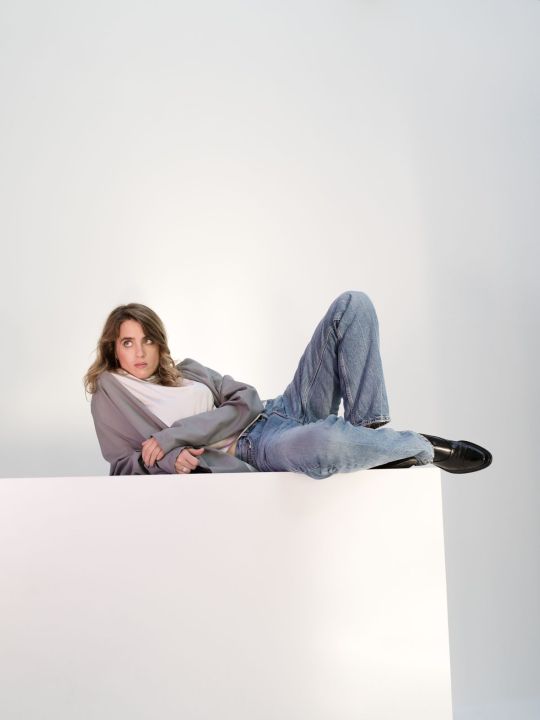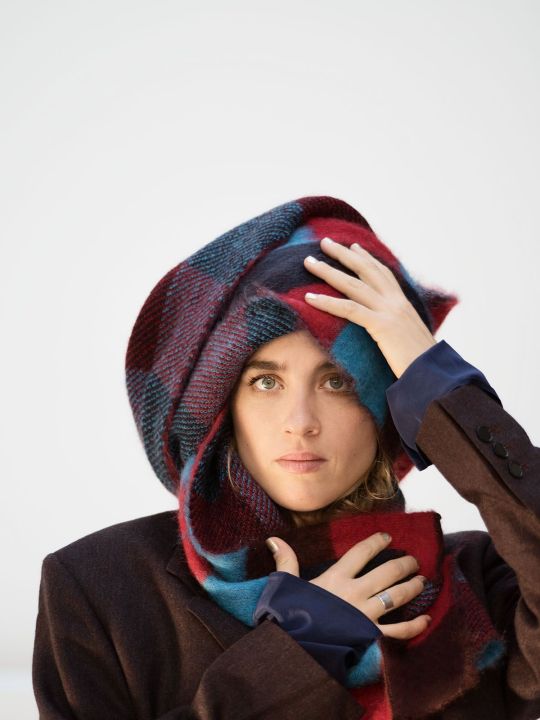#but the exchange?? the sacrifice? seeing it as more of a concrete concept with impact?? oh that's the good stuff
Note
I think that you will be pleased to note that the lady who trained Maui in magic through herself into it so hard that she didn't allow herself time to adjust to the power she was channelling and it ended up nearly killing her and she has been left as someone who /cannot/ heal on her own and with snow white hair because her body has to conserve the pigments and her eyes are now perminantly glowing blood red. She has two personal healers next to her throne whose jobs it is to keep her alive and healthy. She is reckless and bloodthirsty and rules her kingdom with an iron fist and her name is whispered around the land in fear. She was NOT a good influence on the already traumatised and reckless Maui.
Also I'm thinking about more consequences of magic and I'm thinking about the logistics of "Healers need to focus a lot more on chenneling because it's a very intensive process and they need a lot of power, to do this they close their eyes. The most powerful and dedicated healers' eyelids have fused with their face and they can no longer see, only sense objects around them that contain the life force"
And thinking more about that sensing thing, if you are dedicated enough you can learn it, but only really shabbily if you want to keep your sight. So like, you're pushing it if you want to sense trees. If Maui knows how to do this, /theoretically/ he can get around his house. In practice, though, this means he walks straight into anything plastic/metal/rock/dirt without living matter in it. Maui does not know how to do this
-Heathen
Heathen you are incredibly right I am pleased to know this!! Not that she was nearly killed and now needs to have two personal healers dedicated to keeping her alive at all times, but that you went full in on the "magic has consequences" route for your characters!! That part is always so so satisfying to me like yes there are stakes and everything has to be measured in terms of what you're willing to give and if you're not careful it'll end up taking from you instead. It puts magic into the same category as nature as this beautiful yet harsh and unforgiving thing, if that makes sense.
Also loving this Maui lore...how does he feel about this iron-fisted feared woman ruling the land? How did he even end up under her care? Did he enjoy his time there? Was his education sufficient? Does he appreciate and use what he learned or was he being used? I have very little context except that this lady was willing to give her all to him, which indicates a pretty intense bond--positive or negative, I don't know, but it sounds intense. I suppose a lot of this also depends on what kind of ruler she is--why is she feared? Is she good to her people? Is there love within that fear or is it hatred? So many questions....
The concept for the healers sounds fascinating as well, though I'm curious about channeling. Sounds like something with specific connotations in the world you've created so I don't know the extent of what it means, but it sounds important. That'd also introduce another interesting conundrum of injuries and conditions that are assessed based on sight. Bruises and other discoloration, rashes, lacerations, cuts, marks, etc. Because those can be very important medically and yet they would be unable to assess in those ways, either needing to rely on someone less committed to look over those details or relying on some other magical component to treat injuries. There's also the matter of objects that don't contain life force. Because it will only help to an extent, but that won't guide you around inanimate objects or structures...hmm, many ways to go with this one, I like it!!
also just realized that's what you mentioned in the last paragraph (I started responding to the second to last before reading it). I do think the mental image of Maui running into things is funny but simply because I only imagine it happening at full force. There's no caution or hesitation he just goes for it and then boom wall. he goes splat. he does not learn. he does it again.
#quil's queries#heathen nonsie#other's ocs#love love love when there's a give and a take#magic just for the sake of magic is cool#but the exchange?? the sacrifice? seeing it as more of a concrete concept with impact?? oh that's the good stuff#broken bones in exchange for blasts of fire. memories for memories. blood for pain. your body for power. who you are for who you want to be#love it so so much#when a world introduces those kinds of worldbuilding elements I lose my shit#long post
3 notes
·
View notes
Photo

Translated interview
Adèle Haenel: Figurehead of the new French Film
by Daniel Kalt, in: Die Presse, 13th of December 2019
Additions or clarifications for translating purposes are denoted as [T: …]
Adèle Haenel talks about her new film, gender roles and a new cinema by women, which oddly doesn’t give much space to men. [T: 😊]
Adèle Haenel came to Vienna for the Viennale [T: annual Film Festival, here: 24th of October to 6th of November 2019], playing the lead role in the opening film ‘Portrait of a Lady on Fire’. It’s one of those hot almost summer-like autumn days, prior to the photo shoot Haenel is sitting in the scorching heat on the terrace in front of the studio and greets a purring cat, which is passing by, in German. Haenel is the daughter of an Austrian translator, and grew up in [T: Montreuil, in the Métropole du Grand] Paris. According to her, she spoke the [T: German] language as a child, but forgot about it later on, ‘as is often the case’. Only for her role in Chris Kraus’ film ‘The Bloom of Yesterday’, where she plays alongside Lars Eidinger, did she relearn German. [T: Now] in Vienna, the actress, who is one of the most celebrated in contemporary French cinema, is a bit tired after a long promotional tour for her film, which [T: all] began in Cannes. The uproar, which Adèle Haenel will cause a couple of weeks later, when she accuses the French director Christophe Ruggia of sexual harassment that took place during the shoot of her first Film ‘Les Diables – she was still half a child then [T: !?] – preceded Vienna and is therefore not mentioned here. Because of her film projects and her statements as a prominent creative artist it seems obvious to ask whether she considers herself a feminist, to which Haenel responds in a heartbeat: ‘Yes, absolutely. And in capital letters, go ahead and write down FEMINIST.’

Adèle Haenel plays young Héloïse in her new film, which is now shown in cinemas across Austria, and is directed by Céline Sciamma (the two women were a couple for some time, it is their second joint production). After the death of her sister, [T: Héloïse] was brought back from the convent to her family’s home on an island in Brittany. The story takes place in the late 18th century, Héloïse is supposed to be married off to Milan. But first, it’s necessary to send a portrait to her future husband, which should please him. Héloïse refuses the gaze of the painter – the ‘male gaze’ –, who was commissioned to paint her. So, her mother resorts to a trick and hires another artist [T: called] Marianne: She should spend a couple of days with Héloïse as her companion, without revealing her [T: secret] mission. Through gazing at her furtively and catching glimpses of details – lips, an ear, the position of hands –, will she piece together a portrait of Héloïse. But tension builds between the two young women, which leads to a short-lived and passionate affair.

Interviewer: Your new film takes place in the late 18th century – how did you prepare for the role?
Adèle Haenel: This wasn’t my first period film, ‘L’Apollinide’ [T: House of Tolerance, 2011] for example is also from the same era, just before the French Revolution. Besides, I have mainly tried to create the character of Héloïse around a certain concept, a certain image. The historic perspective wasn’t key for me to prepare for the role. Playing in costume was mostly to place this [T: film] in a certain time. But it wasn’t my top priority to lend credence to my character by putting it in a historical context.
I: What is the main theme for you: love, art, liberty, the liberty of art?
AH: The film is mainly about love and particularly about what love can be. It is about desire, the pleasure of intellectual exchange and a blossoming friendship. And then there is also the aspect of art and artistic expression, which leads to an extraordinary relationship between the two main characters. Another important point was also to show love that’s different to what you usually see in films: It is not love at first sight, no ‘coup de foudre’ [T: repeats the same phrase in French], but emotions that are developing slowly and in which you immerse yourself, because they are connected with deep admiration. The film also explores in-depth the central theme of the ‘female gaze’ as counterpoint to the dominating male gaze, which has been prevalent in cultural products for a long time.

I: Does it make a difference for you to be ‘directed’ by a female director, as the term ‘director’ implies in English?
AH: I’d like to state here that I’m an extremely political person. That is why it is important to me to describe the relationship between the actress and director [T: the female form of director is used here] accordingly: It is not a vertical relationship for me, where I’m directed by an opposite, but an equal exchange. We developed this film together, conceptualising love in a way where one character does not dominate the other. I also have a responsibility to carry as an actress, especially in a film like this, which is constructed around the gaze and the person who is looking [T: both genders are included here]. My character is not a passive muse, we tried to break this idea. In fact, it is not the story of an artist [T: male form is used here], who enters a room and sees a woman who inspires him, but something completely different.
I: Would you say that Héloïse is at first motivated by anger about the situation?
AH: You could talk about anger, but this means to break down the bigger issue of resistance to an individual level. It’s not mainly about the anger of this character, but it’s about how she as a woman reacts to her specific situation. Society often denies women the right to live as we want to or our own projects. That’s why I think it’s better to talk about resistance against the entirety of the patriarchal system.

I: How did you express this in the way you acted?
AH: In the beginning Héloïse’s gestures and facial expressions are quite restricted, very much contained. The love story then takes up more space over time, likewise my acting is becoming more generous. That also makes sense from a political point of view: At first there’s the question how to resist the ruling order: Either you sacrifice yourself, because you’re caught up in the system. Or alternatively, as I chose to do for Héloïse, through absence and withdrawal. This means, I negate my existence and I’m only present as detached figure – as object, so that no one comes close to me as subject. My absence is therefore a way to resist.
I: Was this the first time you’ve structured a role like this?
AH: Yes, although I always ask myself profound questions when preparing for a role. That’s the main theme for me, how to create feelings and emotions that leave behind the screen.

I: Do you have a desired impact in mind with your craft?
AH: I would like to spark off something like a mimetic reaction among the audience, which goes beyond the feelings and emotions in the film. [T: 🔥] Let’s call it a vibration, which resonates in real life and which I would like to set off. That’s all the more important, because it allows for new storytelling. In ‘Portrait of a Lady on Fire’ we make fun of the patriarchy. A conscious decision was made to almost entirely exclude men from the picture. We don’t convey a political message openly, but instead are very concrete by not showing something.
I: Do you consider yourself a feminist?
AH: Yes, absolutely. And in capital letters, go ahead and write down FEMINIST. And you, are you a feminist? I see the reluctance to openly support feminism among men rather than women. There are of course women who are sometimes reluctant to support feminist demands. But this is the result of a specific system, in which women are oppressed. There was and still is an expectation for us to subordinate ourselves, or even become extinct. The time for women to speak is always less than for men, irrespective of the context. And this is despite the stereotype of women talking more in general: Gloria Steinem quite rightly says that it’s not about the actual time that women are speaking, but about the silence that is expected of them.

All pictures by Elsa Okazaki
#Adèle Haenel#Austrian interview#Portrait of a Lady on Fire#My translation#Thanks for breaking my brain Adèle#FEMINIST in all caps#Musings of a Woman that wouldn't have it any other way#long post
512 notes
·
View notes